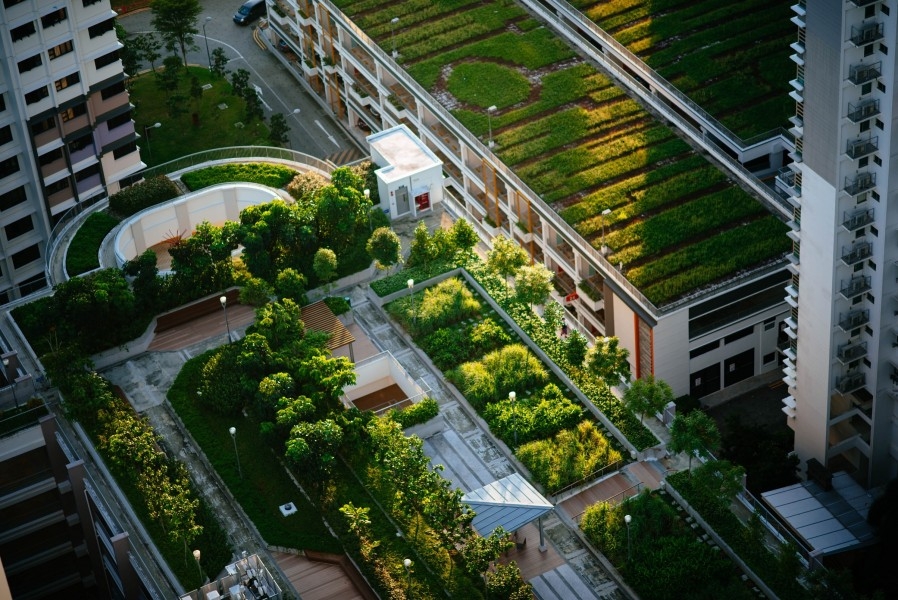 Photo: CHUTTERSNAP on Unsplash
Photo: CHUTTERSNAP on UnsplashClean air, clean water, warm homes, lower housing costs, as much greenery as possible in the surroundings, and organized public transport without crowds and pollution—this is the least that each of us would want from urban life.
However, several facts separate us from this picture. The first is that cities currently produce more than 60 percent of the world's greenhouse gas emissions and are the most polluted living environments. A quarter of all air pollution and 40 percent of drinking water pollution come from the construction industry. This means, among other things, that the buildings and neighborhoods we live in directly affect our health and climate.
There is also the fact that by the middle of the century, as much as 70 percent of the world's population will live in cities. Population growth and urbanization will encourage construction, which will lead to more concrete around us and increase the consumption of electricity.
What is encouraging is that cities, as direct and major polluters of the environment, can best respond to the challenges of climate change and contribute the most to improving the quality of life for all of us and the regeneration of the planet.
What can we do to make our cities cleaner and life in them better and more humane?
GREEN AGENDA
The European Green Deal represents a turning point in the fight against climate change because it aims to make Europe the first continent to achieve carbon neutrality by 2050. Serbia adopted this strategy through the Western Balkans Green Agenda, which involves a number of practical steps and initiatives that should result in the decarbonization of the region and economic growth in line with sustainable development principles.
Translated into our daily lives, this means that we can do a lot to live in so-called green cities. A "green city" is any city that applies green and sustainability standards that affect the reduction of pollution and a healthier life for its residents. How green a city will be depends not only on the local self-government and the companies that operate there but also on the citizens themselves—more precisely, on how much everyone is ready to adopt and implement their local green agenda.
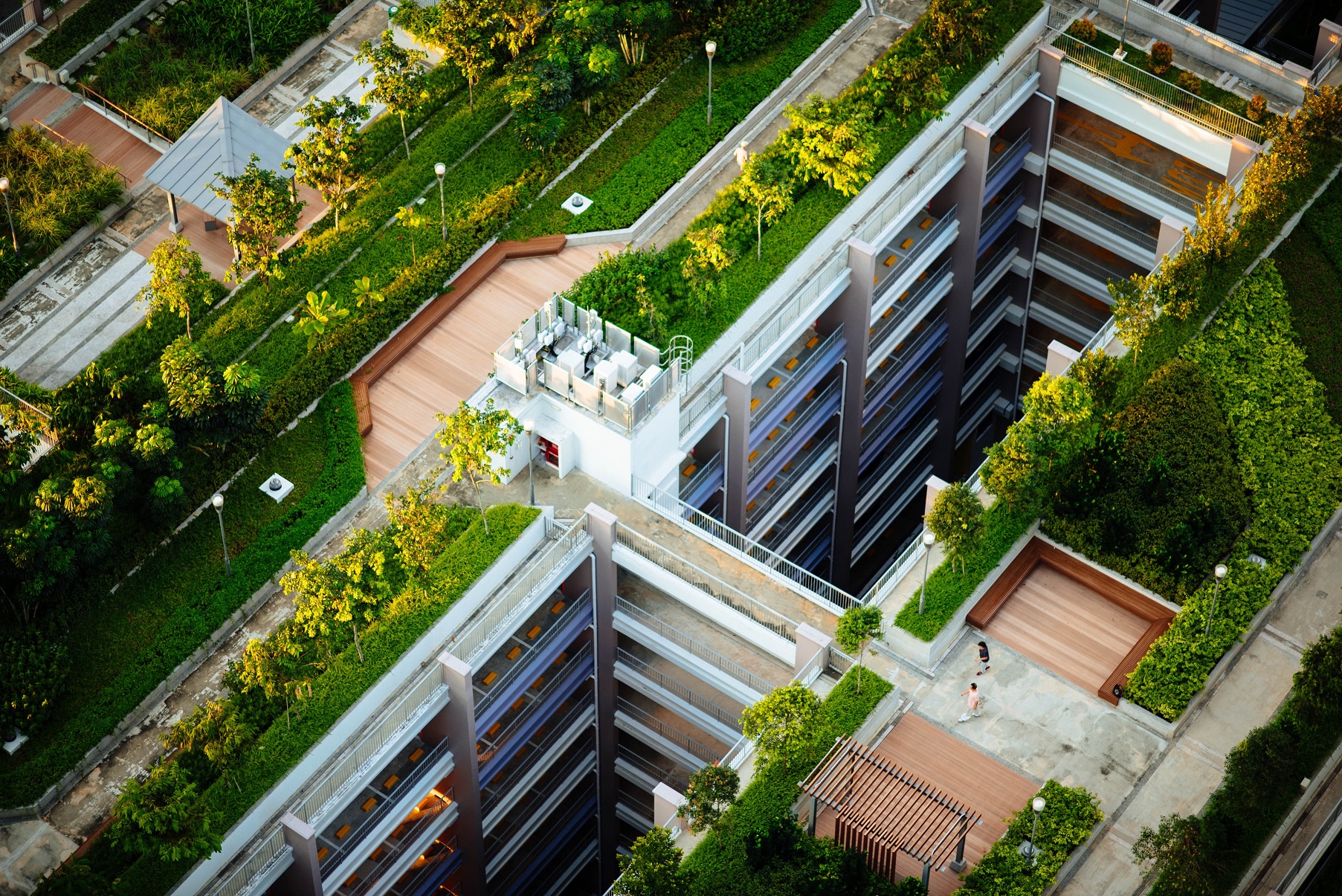 PHOTO: CHUTTERSNAP on Unsplash
PHOTO: CHUTTERSNAP on Unsplash
There are examples of green cities all over Europe. In our region, Ljubljana leads the way, and in the rest of Europe, the Nordic cities stand out, followed by Berlin, Brussels, Vienna, Amsterdam... All of these are cities where, thanks to carefully planned urban solutions, measures to improve energy efficiency, the transition to renewable sources of energy, as well as measures to increase electromobility and other sustainable solutions, huge advances have been made in recent years in the quality of life of their citizens.
GREEN BUILDING, GREEN MATERIALS AND ENERGY EFFICIENCY
Cities throughout Serbia are also increasingly turning to green and sustainable solutions. There is a noticeable increase in the number of investors investing in green construction. This year alone, the number of buildings with green certificates has quadrupled. Also, building materials, such as green concrete with a significantly reduced carbon footprint, as well as modern energy-efficient solutions for use in construction, are increasingly available and in demand on the market.
There are many local governments that are very proactive in adopting and implementing a green strategy. Belgrade recently published the Action Plan for a Green City and the Action Plan for Sustainable Energy and Climate until 2030, which plan to invest 5.2 billion euros in improving air quality and reducing greenhouse gas emissions. Along with Belgrade, Novi Sad, Raška and Irig, Kragujevac is one of the five cities invited to take part in the "Green Cities of Serbia" project supported by the Embassy of the Kingdom of the Netherlands.
There are numerous examples of civic green initiatives at the local level. There are more and more multi-family residential buildings in which the residents make agreements to jointly invest in the energy renovation of the buildings and replace worn-out installations and equipment with energy-efficient solutions, thereby ensuring the energy security of their homes and lowering their electricity bills.
GREEN ROOFS AND GREEN FACADES
Tenants can also start an initiative to green the flat roofs of their buildings, which is widely practiced in European cities. In addition to increasing the aesthetic value of the building, green roofs reduce air pollutants, filter harmful gases, and also absorb or repel sound waves.
At the same time, they are excellent thermal insulators for the building because they retain heat in the winter and keep it cool in the summer. They also provide additional space for being in nature and can be used as a garden for growing edible plants.
In Switzerland, for example, a law was passed that mandates that all newly designed flat roofs, as well as all adaptations, must be constructed as green roofs. France also passed a law this year that obliges investors to install green roofs or solar panels on all new office buildings they build.
Green roofs are not the only solution to increase the green area in cities and improve their microclimate. Green walls, that is, green facades, are increasingly used in modern architecture, so there are more and more projects with such solutions in our country.
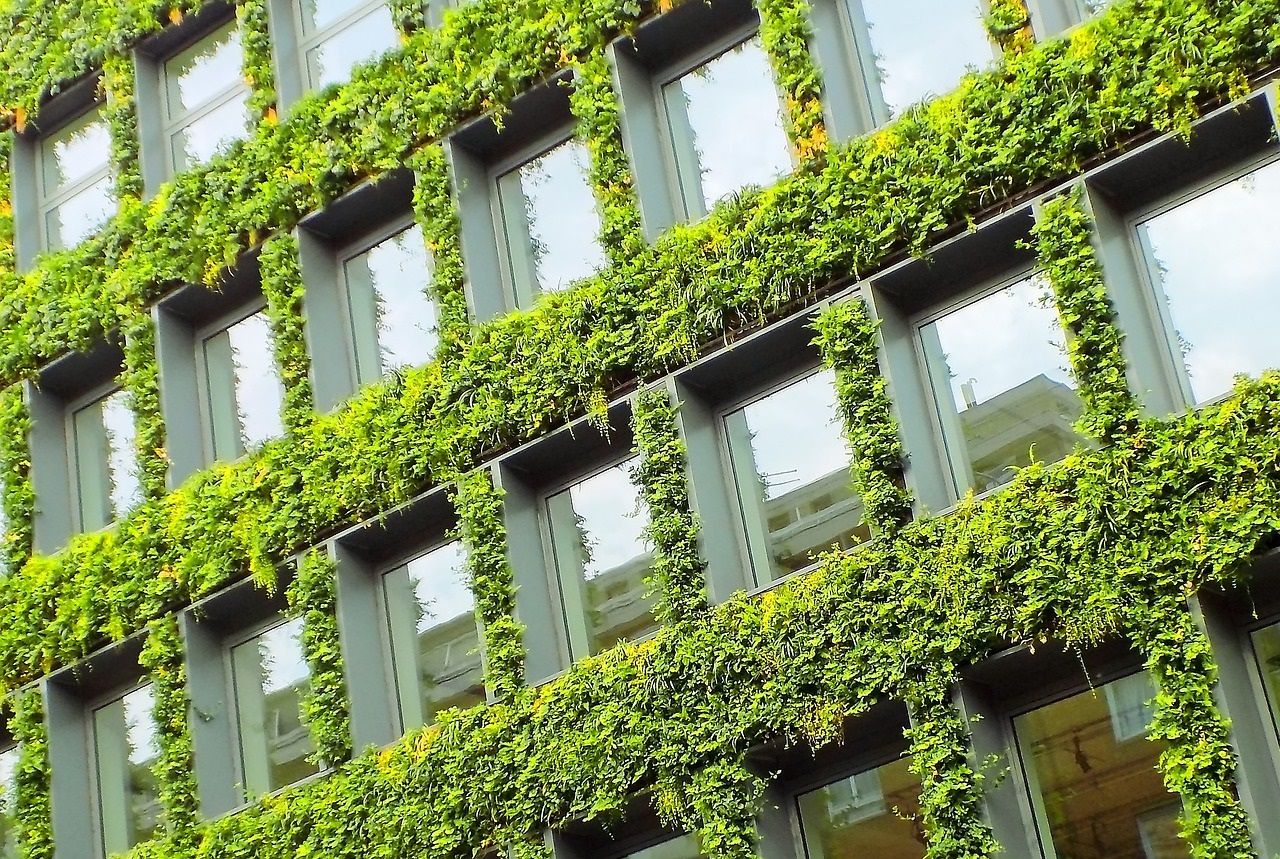 PHOTO: PIXABAY
PHOTO: PIXABAY
Apart from the visual effect, external plant walls insulate buildings, catch rain, and provide habitat for insects.
SOLAR PANELS: LOWER BILLS, GREATER ENERGY INDEPENDENCE
One of the solutions that can lead us to greener cities the fastest is the massive installation of solar panels on the roofs of houses, residential buildings, office buildings, and industrial facilities.
Considering the solar potential of Serbia and all the advantages provided by switching to this renewable energy source, the recommendation of energy experts is that practically everyone, whose roof structure allows it, should install solar panels.
It is estimated that Serbia has an area of about 60,000 hectares in roofs alone. If they were all covered with solar panels, we would have three times more electricity than is needed in all areas. If at least a quarter of the roofs were covered with solar panels, that would cover half of Serbia's energy needs.
Although in recent years there have been more and more small solar power plants springing up all over Serbia, the current production of solar energy is still negligibly small; in 2021, its share in the total production of electricity was 0.04 percent. On the other hand, switching to solar energy is the fastest, easiest, and cheapest form of using renewable energy sources, both for the economy and for citizens.
The advantages of solar energy are numerous: it does not pollute the environment, reduces the cost of electricity or heat, and, above all, ensures energy independence for those who produce it for their own needs, which contributes to greater energy independence for the entire country.
The installation of solar panels implies a certain investment, but it returns many times over in five or six years. After you fully recover the invested funds, the solar panels start working for you and to your advantage, and you have your own energy for personal needs without any additional cost.
Furthermore, the majority of today's energy solar systems do not require much maintenance and thus do not cost a lot. Solar panels used for household purposes require cleaning only a few times a year.
Great benefits are also brought by the new Law on the Use of Renewable Energy Sources, which introduced the category of consumers. This means that the excess electricity left over after you meet your needs can be handed over to the electricity distribution network. In the winter months, when the production of electricity from solar power is reduced, your electricity bills will be reduced by the price of the electricity you deliver to the grid.
NIS AS A GOOD PRACTICE MODEL
Prosumers can be households, residential communities, companies, or individuals. Until now, this convenience has been used by a small number of citizens, but that is why more and more companies are realizing the responsibility they have in terms of energy efficiency, energy security, and in general, improving the environment.
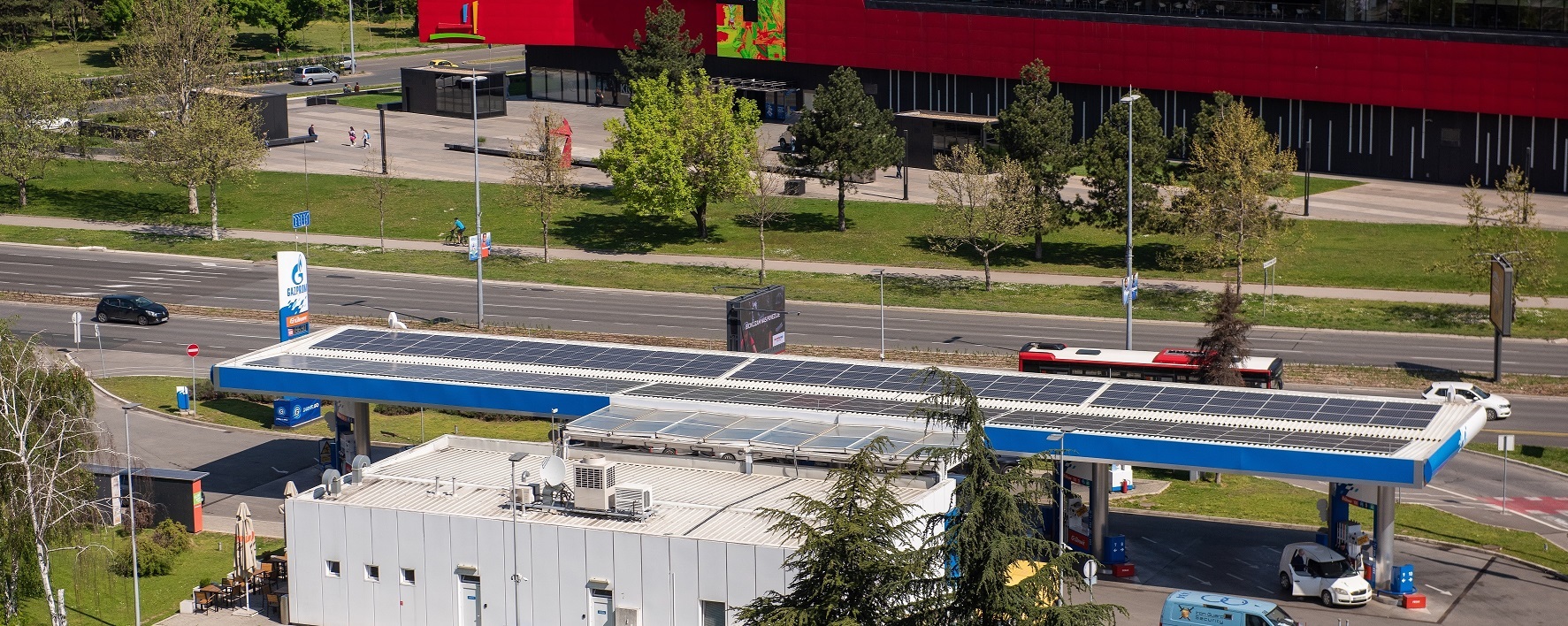 SOLAR PANELS AT GAZPROM GAS STATION / PHOTO: nis.rs
SOLAR PANELS AT GAZPROM GAS STATION / PHOTO: nis.rs
One of such companies is our largest oil company, NIS, which has started installing solar power plants at its gas stations in Serbia. In this way, NIS gas stations will not only be consumers but also producers of electricity.
NIS decided to take this step based on the principles of sustainable development and implementing its "green agenda," which includes investing in renewable energy sources in order to reduce carbon dioxide emissions.
Solar panels have already been installed at the following NIS Petrol and GAZPROM gas stations in Serbia: "Krnješevci," "Novi Beograd" (formerly Dayton), "Stari Banovci," "Preljina 2," "Velika Plana - highway," "Kragujevac 7 - Elektrošumadija," "Blok 45," and "Gornji Milanovac 2." This investment is expected to provide annual savings in electricity procurement of 300 MWh, with the delivery of about 40 MWh to the distribution network, and with an annual reduction of carbon dioxide emissions of 375 tons.
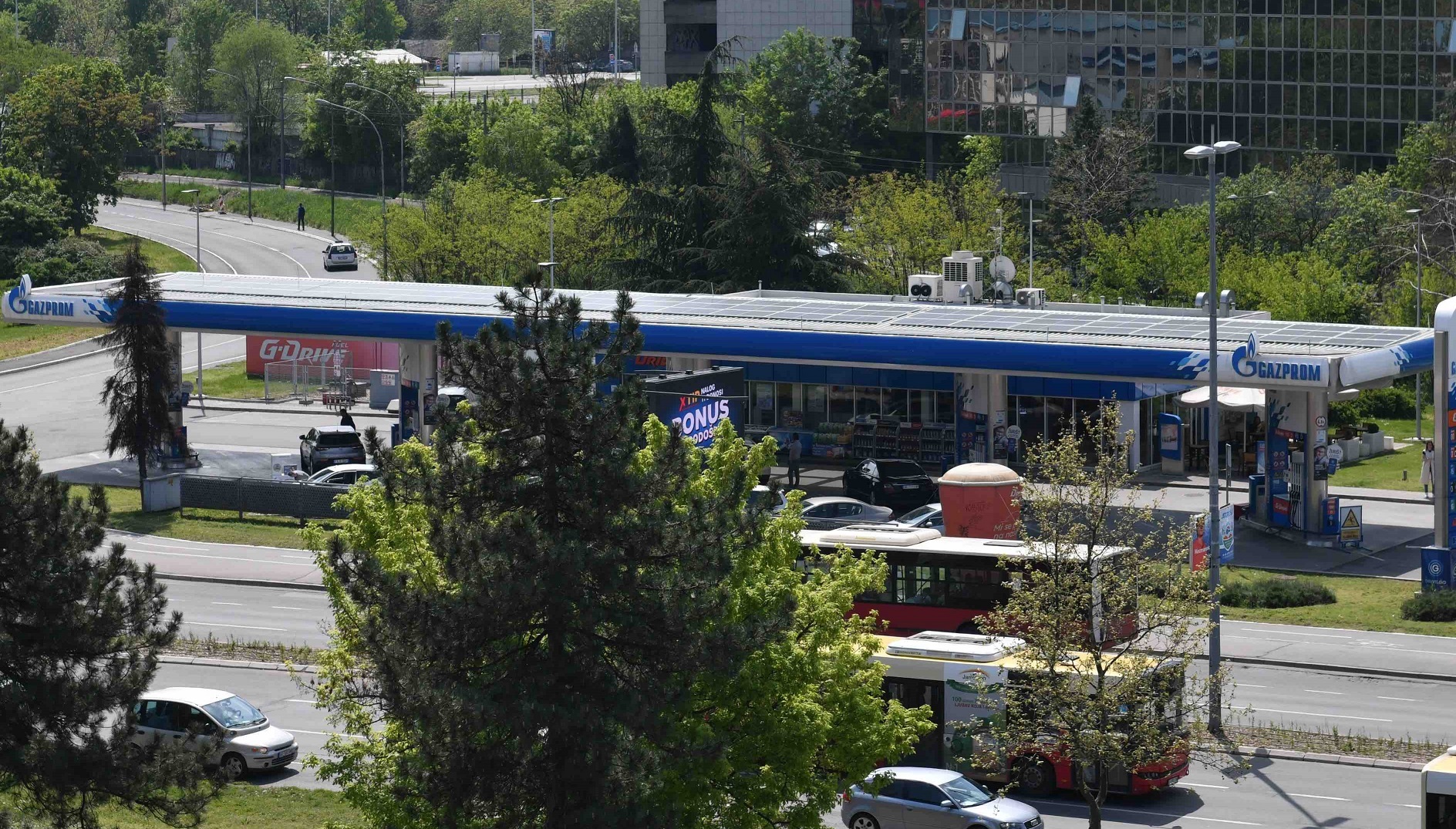 PHOTO: nis.rs
PHOTO: nis.rs
This project is not the only one implemented by NIS as part of its green agenda. Since 2009, the company has invested around 120 million euros in environmental projects. With other projects that significantly contributed to the improvement of environmental protection, the investments totaled 900 million euros. The largest number of these projects was implemented in the Pančevo Oil Refinery, which in 2017 became the first energy facility in our country to receive an integrated environmental permit from state authorities, which confirms that all production processes in the factory are in compliance with the highest local and European environmental standards.
In this way, NIS makes its contribution to improving the ecological image of the whole of Serbia as well as to the fulfillment of the UN's sustainable development goals, such as Sustainable Cities and Communities, which includes activities and measures to make cities and human settlements inclusive, safe, resilient, and sustainable, as well as the Climate Action Goal, which refers to activities to combat climate change, in order to significantly increase the share of renewable energy in global energy production and consumption by the end of 2030, double the rate of energy efficiency, and provide everyone with affordable, modern, reliable energy services.
By: Jovana Nikolić